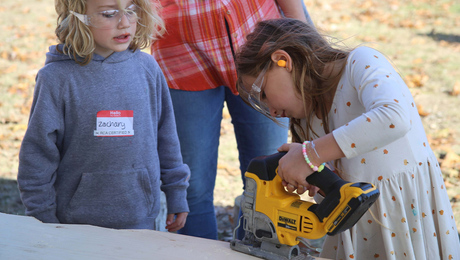Podcast Episode 130 – Where New Meets Old
Tie new construction into old; roof rafters; job-site tool transport and storage; and painting trim

The boys work through the best way to tie new construction into old, out-of-whack structures. Other topics include roof rafters, job-site tool transport and storage, and whether to paint trim before installation or after.
Question 1, from Dan: Gents, I’m planning to pop the top on my single-story house. Once the existing roof is off, I’d like add a new floor, then some walls, and then 2x rafters. My concern and my question are that this is an older house, so I’m expecting to run into walls that aren’t dead level along the top. I’m not sure whether to worry about shimming, and if so, where and how to go about doing it. Seems like skipping the shimming is just asking for trouble when it comes to framing the roof. What do you guys recommend?
Question 2, from Barry: Hi guys, My question is about tool and jobsite organization. How do professionals, especially remodelers who need to do work across trades, ensure they come to the site prepared with all the tools and materials they might need for the days work? Modular tool box systems certainly help organize but it seems like they can also lead to inefficiency in space (and OCD). As an example, it would be interesting to hear you discuss what your jobsite setup would look like for a half-bath remodel.
Question 3, from Andy: My wife and I just bought a 1960’s rancher in Tennessee that has not been touched. We are going to be resanding floors, remodeling the bathrooms and kitchen, and updating the trim package to more of a craftsman style.
I’ve thought about spraying my trim with either an airless sprayer (Issue 252) or a HVLP sprayer (Issue 268). I’m leaning towards HVLP because I already have a gun that hooks to my compressor, have done some testing with it, and it looks great. However, I’m trying to figure out that best sequence of painting. Should I spray the trim outside before installing then patch nail holes and touch up paint? Or should I paint it in place? If I do it in place what comes first, painting walls or spraying trim? I’m a little worried about overspray as I’m not sure how far I should mask out from the trim.
Finally, I plan on buying primed wood so technically I would just need to lay down a couple coats of paint, correct?
This episode of the podcast is brought to you by Benjamin Obdyke.
Benjamin Obdyke would like to use the special occasion of their 150th anniversary to thank the nuisances that builders and homeowners despise. Their premium products protect from those pesky things like rain, snow, humidity and the neighbor’s sprinkler system. Take HydroGap, a drainable housewrap that eliminates moisture from your wall assembly. Or Cedar Breather, an underlayment for wood roofing that allows continuous airflow behind shingles or shakes. One man’s headache is another man’s successful business. To build better with Benjamin Obdyke, visit benjaminobdyke.com.
We hope you will take advantage of a great offer for our podcast listeners: A special 20% off discounted rate to subscribe to the Fine Homebuilding print magazine. That link goes to finehomebuilding.com/podoffer.
The show is driven by our listeners, so please subscribe and rate us on iTunes or Google Play, and if you have any questions you would like us to dig into for a future show, shoot an email our way: [email protected]. Also, be sure to follow Justin Fink and Fine Homebuilding on Instagram — and “like” the magazine on Facebook. Note that you can watch the show above, or on YouTube at the Fine Homebuilding YouTube Channel.
The Fine Homebuilding Podcast embodies Fine Homebuilding magazine’s commitment to the preservation of craftsmanship and the advancement of home performance in residential construction. The show is an informal but vigorous conversation about the techniques and principles that allow listeners to master their design and building challenges.
Links for this episode:
- Guertin jacking up a huge wall:
- An example of using a material lift to raise heavy objects.
- Patrick’s slideshow.
- Veto ProPac.
- Systainer-style tool box review.
- Justin’s scaffold.
- Tyler Grace’s HVLP setup.
- Waterborne shellac.
- Don’t be afraid to spray.
- All FHB podcast show notes: FineHomebuilding.com/podcast.
- #KeepCraftAlive tee-shirts support scholarships for building trades students. So go order some shirts at KeepCraftAlive.org.
- The direct link to the online store is here.
























View Comments
The question of wall lifting jack capacity came up when discussing lifting a gable wall. I checked the Proctor, TranzPorter and Qualcraft jacks and each states a capacity of 1000 lb per jack (the extra long Proctor models only have a 500 lb cap.)
By doing a quick calculation you can figure what the weight of the wall would be - usually just studs and sheathing.
When I figured out the weight of the 2016 ProHome gable it was 3600 lbs so we used 4 jacks.
In most cases 2 jacks can lift very long (50 ft+) walls. But you'd probably want to use more than two jacks so the wall plate stays fairly straight otherwise the nails into studs may pull out a little.
Justin, how about attic trusses for the second floor loft on the garage?